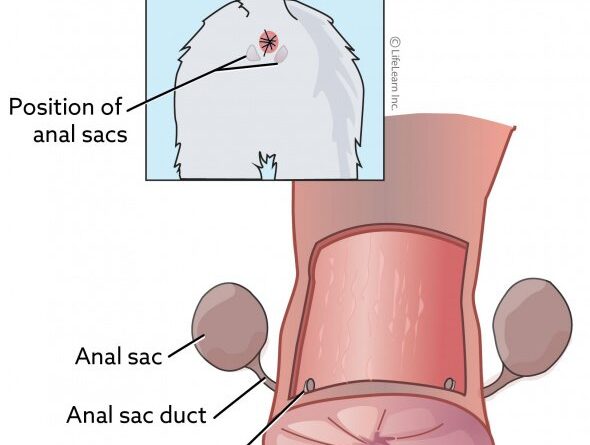HEALTH MATTERS – Anal Glands, by Vikki Marshall RVN APHC
All dogs have these glands (often known as anal sacs) they are situated near to the anal opening. These glands which are normally the size of a small grape normally release a few drops of scent marking fluid whenever your dog defecates. When the glands become blocked or swollen, they can enlarge which causes discomfort, and your dog may try to relieve themselves by licking the area or scooting their bottom along the floor.
Clinical signs of anal gland problems can include scooting of bottom, excessive licking around anal area, straining to defecate, releasing a fishy odour, leaking of fluid, bleeding and or swelling around the anus (abscess).
There can be many things that can cause anal gland issues, and, in many cases, it can be a combination of reasons. The most common underlying reason is issues with the gastrointestinal system. In order for the glands to empty naturally they need the faeces to be firm and healthy to create the correct pressure on the glands as the faeces passes over them. If your dogs’ faeces are small or soft the glands will not empty as they should causing them to fill up over time. Other causes can be linked to underlying allergies, or the anatomical positioning can cause problems if the glands are not quite positioned correctly, they will not empty correctly (this can be very common in overweight dogs as the layers of fat can push the glands out of position).
If your dog needs its anal glands emptied, then you must seek veterinary help as emptying glands internally are classed as an act of veterinary surgery and may not be performed by any one other than a Vet or a Veterinary Nurse acting under the guidance of a Vet.
To help your dog empty its glands as it should, you need to ensure that your dog is fed on a high-quality diet with the correct ingredient and proper nutrition to ensure their stools are healthy and promote healthy anal gland function.
Vikki Marshall RVN APHC

